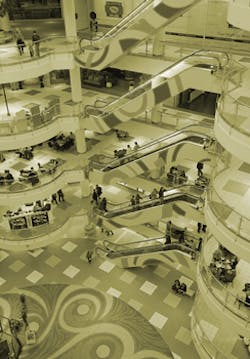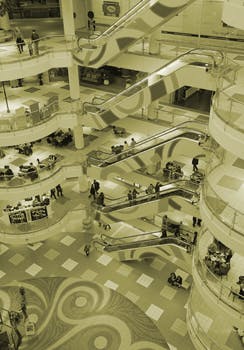What Building Owners Need to Know to Score Good Tenants
By Greg Schenk
Right now, vacancies vary greatly across the country and by property type, but landlords from every property type need to stay sharp to ensure that they can attract every possible (and every good) tenant in 2008 and beyond. This article is an overview of what building owners need to do (by property type) to make certain they get these tenants — and what incentives building owners should expect to provide to tenants who are looking for new space.
Attracting/Finding Good Tenants
There are several things that should be important to building owners when selecting tenants.
- First and foremost in terms of importance is the credit of the tenant.
- Second is the size of the tenant - in terms of sales and profits, and the size of the space it wants to lease.
- Third is the length of the lease that the tenant will sign (3 to 10 years, in most cases). The longer the lease, the better the terms and conditions for the tenant, and, depending on property type, a longer lease may be needed to offset the higher build-out costs of the space.
- Fourth is the expense of the build-out of the space that the tenant will be leasing. Costs have increased dramatically over the last few years: Steel, cement, drywall, copper, water tap fees, and other items have made build-out costs increase by more than 20 percent in the last few years.
Obviously, good marketing is one way to attract tenants. But, a good marketing package today is more important than ever in attracting good tenants — not just offering fancy, slick glossies, but providing fully detailed information about the property that is easily accessible online. It should also include the following: a site plan; a building plan; floorplans, including as-builts (if second-generation space is very important); a list of amenities in the building (Wi-Fi, a café, underground parking); a location map; a list of local amenities; easy points of ingress/egress; proximity to the owner, employees, clients, customers, etc.
Office Properties
Every office tenant has its own hot buttons, but one thing is clear: You have one chance to make a good first impression on a prospective tenant. It may sound simple, but these types of things are often overlooked in office spaces. The building needs to be clean (including a clean parking lot and a clean lobby) and should be well lit. It needs to offer an efficient elevator (if the building has multiple levels), handicap accessibility for parking and ingress and egress, and easily divisible floorplans for average-sized tenants (you wouldn't believe the number of nice buildings that have floorplans set up to accommodate full-floor tenants, but that don't divide well for smaller tenants - and, in most markets, there aren't as many full-floor tenants looking for space right now).
In a new building, building owners should work closely with leasing agents and tenant rep brokers to look at the size/number of tenants before buildings are designed - this will determine what type of tenant the building owner is marketing to.
From the tenant's perspective, knowing how much space they need before they tour the building is paramount. For tenants, it's suggested that they get a non-building-specific space plan assessment completed to make sure they know how much space they really need (this way, they're not wasting time and resources by looking at spaces that don't fit them and/or their budget). Check out (www.irepthetenant.com) for a form to help with this assessment.
Good tenant signage — both on the exterior of the building and in the lobby — should be easy to find, read, and follow. Cleanliness, as mentioned earlier, is paramount. The restrooms should be spotless with no visible trash. The smoking area(s) outside should be enclosed.
Recycling has become a bigger issue (paper, bottles, etc.), along with green buildings, as tenants become more aware of their impact on the environment. Building owners should plan new buildings (and think about existing buildings) with these things in mind, as well as provide bike racks, storage for recyclables, etc.
Parking and HVAC systems are typically office tenants' No. 1 hot buttons. Tenants will complain more about these two items than about the rent being too high (along with poor management and poor maintenance of a facility). You should have plenty of parking available (tenants are packing more and more people into their building spaces) and HVAC systems that are broken up into multiple zones.
Buildings with not enough functioning and efficient elevators, not enough parking space, dim lighting, poor maintenance and janitorial services, etc. are definitely behind the eight ball. You shouldn't even show your property if these things are going on inside your walls — word gets around quickly about which building owners provide a high level of service and which ones squeeze every nickel out of the property without regard to tenants' wishes and needs.
Retail Properties
What about retail buildings? Location becomes an even bigger area of importance in this category, as does easy ingress and egress (buildings that are off of a freeway or near traffic signals, buildings that have too much or too little traffic, etc.). Safety, maintenance of the center, sidewalks, common areas, etc. are also important. Most retailers do a very good job of keeping up with these things, but older shopping centers that haven't been renovated recently will need to keep pace — or vacancies will rise no matter how much they discount their lease rates.
There are many older centers that are planning renovations in the next few years to compete with new facilities — especially the shopping centers that were in a great location initially, but are now in secondary locations. The cost to build new has gone up greatly, so a partial renovation or new "skin" is much less costly than building from the ground up, as land costs, water tap fees, etc. increase on new builds nationwide.
Industrial Properties
For industrial space, it's all about size of the building and ceiling heights. Distribution centers are consolidating around the country (we're going from many 250,000- to 400,000-square-foot centers to centers that are 500,000 to 1 million square feet in size, with increased ceiling heights of about 30 feet). Space that is easily divisible is also important, as is ample power and thermal supply. As in the office market, parking and storage space in these types of buildings is crucial (for cars, trailers, trucks, etc.).
Consolidation in this sector will give smaller tenants a good opportunity to grow at cut rates, as this sector of the market should show higher vacancies in the year to come.
Multi-Family Properties
For apartment buildings, the subprime mess should mean some more activity for apartments as some people lose their homes and move into rental properties. Apartments need to offer great amenities and a high level of cleanliness to attract and retain tenants — especially those used to owning their own homes. Well-stocked fitness centers, business centers, children's play areas, on-site ATMs, outdoor seating areas, and integrated, prewired entertainment centers are becoming popular, as are direct-access garages and private entries (or anything that makes the apartment feel more like a single-family home).
Property management and tenant retention across the board is becoming more important as building owners find out that it's much easier to keep an existing, happy tenant than to try to replace a new one and end up with vacant space for 6 to 8 months (and spend more on replacement build-out for the new tenant).
Properties in 2008
What can building owners expect for 2008? Good activity, as tenants with even 2 years remaining on the lease will be testing the waters to see what kinds of deals are out there in each segment and putting together long-term, strategic plans for their firms.
If you follow the information presented here, you'll have an excellent chance of landing new tenants in 2008. Remember: Having a strategic plan is key, as is surrounding yourself with experts in each area to ensure that your goals are met, whether you're the building owner or the tenant.
Greg Schenk, SIOR, is founder and president at Columbus, OH-based The Schenk Co. Inc.



